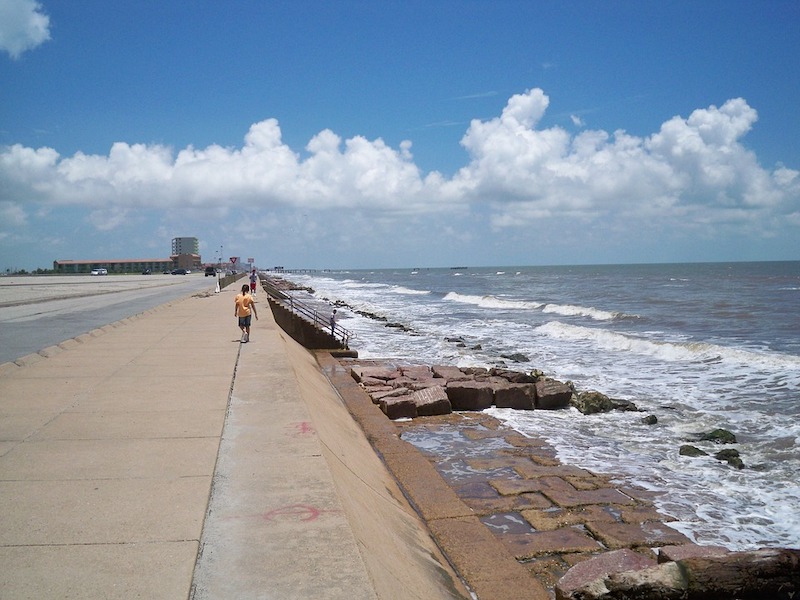A plan being developed by the Texas General Land Office and the U.S. Army Corps of Engineers would spend as much as $32 billion to protect the Houston-Galveston area from storm surges.
The project would construct the nation’s most ambitious and expensive coastal barrier system. It would consist of 12-foot-high sand dune-topped levees to protect beachfront homes and businesses as well as a storm surge barrier system.
The plan has already gone through revisions to make it more effective and more environmentally friendly. The plan has drawn criticism from the Galveston business community which says a proposed ring levee would hinder cargo and passenger loading at the Port of Galveston. Environmentalists are concerned that a gate system between Galveston and Bolivar to block storm surges would diminish exchange of saltwater and freshwater between Galveston Bay and the Gulf of Mexico that is important to marine life.
The Houston-Galveston region, home to millions of people and the nation’s largest petrochemical complex, is vulnerable to massive storm surges and currently has no comprehensive storm protection system.
Related Stories
Codes and Standards | Mar 19, 2020
ASHRAE provides COVID-19 resources for operating, maintaining HVAC systems
Includes recently approved position document on Airborne Infectious Diseases.
Codes and Standards | Mar 19, 2020
CaGBC launches new version of its Zero Carbon Building Standard
Version 2 draws on lessons from more than 20 zero carbon projects.
Codes and Standards | Mar 16, 2020
Concrete industry reduces carbon footprint by 13% over five years
Result mostly due to more efficient use of Portland cement.
Resiliency | Mar 13, 2020
Feds push use of eminent domain to force people out of flood-prone homes
Local officials that don’t comply could lose federal money to combat climate change.
Codes and Standards | Mar 12, 2020
Design guide for sloped glazing and skylights updated for first time in 30 years
Helps with choosing proper glass for non-residential applications.
Codes and Standards | Mar 11, 2020
Two tree species native to the Northeast found suitable for CLT
Eastern white pine and eastern hemlock pass strength testing.
Codes and Standards | Mar 10, 2020
Prescient receives ICC certification for seismic resilience system
Technology suitable for buildings up to 12 stories in earthquake-prone areas.
Codes and Standards | Mar 6, 2020
Design firms creating plans to re-imagine D.C.’s tidal basin
Area including National Mall is facing increased flood risk.
Codes and Standards | Mar 5, 2020
France to mandate all new public buildings be 50% timber or other natural materials
Measure would go into effect by 2022.
Codes and Standards | Mar 4, 2020
American Concrete Institute and Precast/Prestressed Concrete Institute expand partnership
Will collaborate on new code requirements.

















